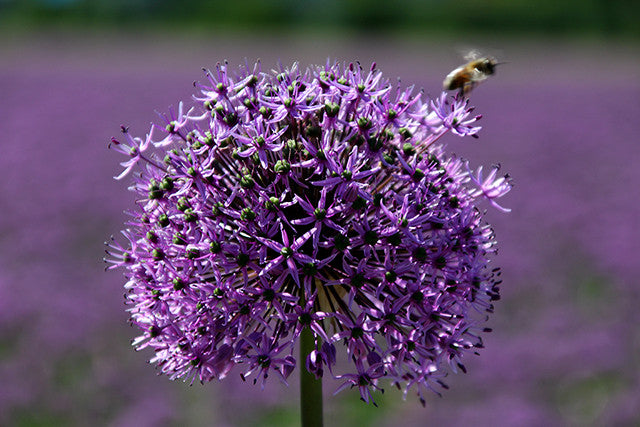
Alliums! All about Allium Bulbs
This has been a great year (so far) for ornamental onions. For several years now, Alliums have been the ‘must have’ plant for many gardeners, and you can see why – I fell in love with them 20 years ago, and would never be without several new types each year.
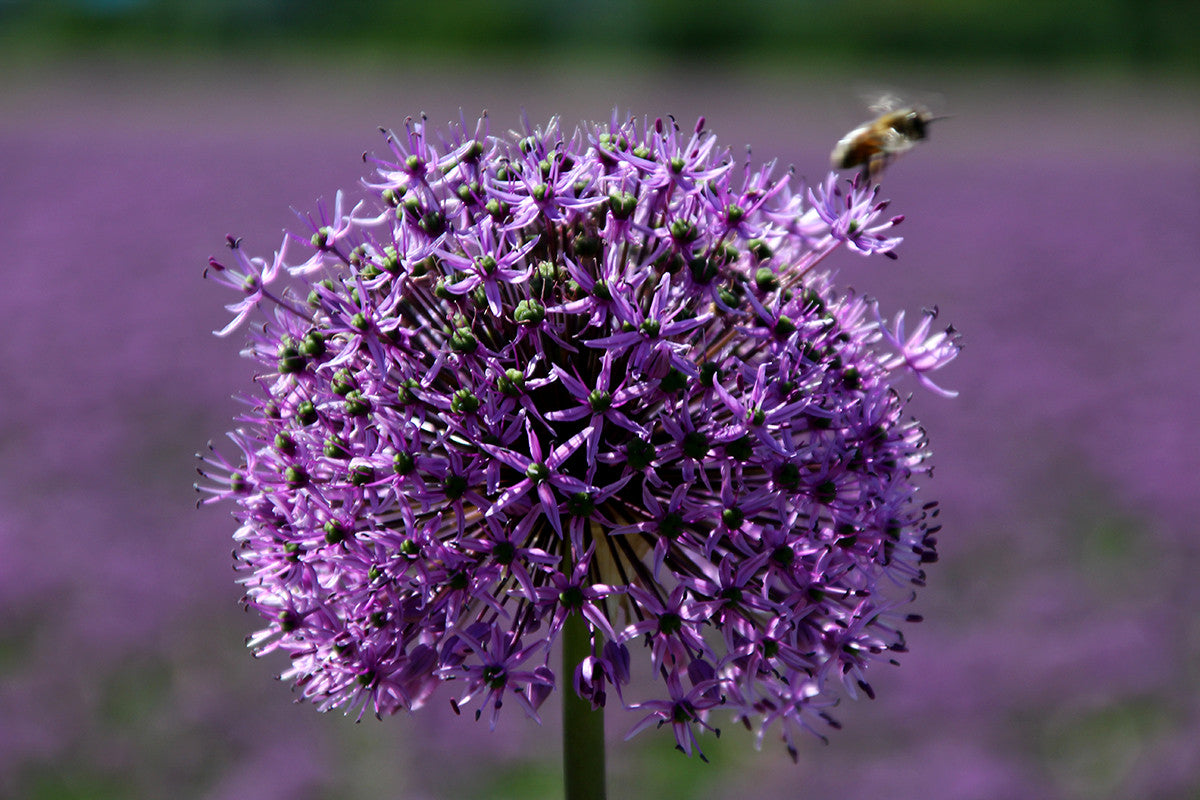
In books and catalogues they are referred to as alliums, and they produce their wonderful flowers in May and June, after the flourish of spring bulbs and before the exuberance of summer. They hold their colour for several weeks and once that fades, many of them have striking seed heads. Hardy and easy to grow, they stand up straight, usually without needing any support, and they come in a glorious range of heights, sizes and colours.
The allium genus is made up of some 260 species of bulbous perennials, many of which are well known in the vegetable garden. Onions, leeks, shallots, garlic, chives – they are easily identifiable because they give off their distinctively pungent scent in varying degrees when the leaves are crushed.
| Farmer Gracy’s Allium Conundrum |
| See if you can work out the answer to this question (answer at the bottom of this page). Alliums are, of course, members of the onion family. But which of the following is NOT also a member of the onion family? |
| 1) Agapanthus 2) Daffodil 3) Tulip 4) Snowdrop? |
Within the range of ornamental alliums there are short varieties, such as Allium nevskianum (which grows to just 15cm or so in height), and taller types like Gladiator ( which I’ve seen at a hugely impressive 165cm tall).

In most cases, allium leaves have started to die off by the time the flowers are produced, so it’s a good idea to grow them through herbaceous or shrubby ground-cover plants that will camouflage any dead or dying foliage and provide a good backdrop to the dramatic flowers. Incidentally, bees and butterflies and all manner of beneficial insects love the taste of alliums, while
Planting alliums
Alliums do best on light, free-draining soil, in full sun and sheltered from strong winds (otherwise the taller varieties will need staking).
Bulbs should be planted in late summer or early autumn – so order them now. And don’t hold back on numbers, as these plants definitely increase in drama the more you have.

As a rule, it is best to cover the bulbs with around three times their own depth of soil. I always use a pebble to mark the planting spot, to reduce the chance of accidentally digging up or slicing through the buried bulbs.
Plant the bulbs under the foliage of neighbouring plants; this means that when the alliums themselves are going over at the end of their flowering season, their dying foliage will be hidden.eatured alongside blue-and-white chionodoxas and Anemone blanda, creating a very pretty spring scene.

The plants quickly grow to 75-90cm high, and in May or June they burst into flower. Heads can be up to 25cm across, and even more.
Many types are scented and, for me, some of the perfumes are stronger and better than roses. But, it is important to say that fragrance is a very personal thing: what is a gorgeous perfume to one person may be unpleasant or non-existent to another.
On-going care of alliums
Alliums don’t need pampering, and will live for many years, if left undisturbed.
If the weather is particularly dry during the growing season, they will appreciate extra watering while in leaf. From the second year onwards, it is a good idea to give a fortnightly application of a high-potash liquid fertiliser, such as a tomato fertiliser, while the buds are forming and plants are flowering.
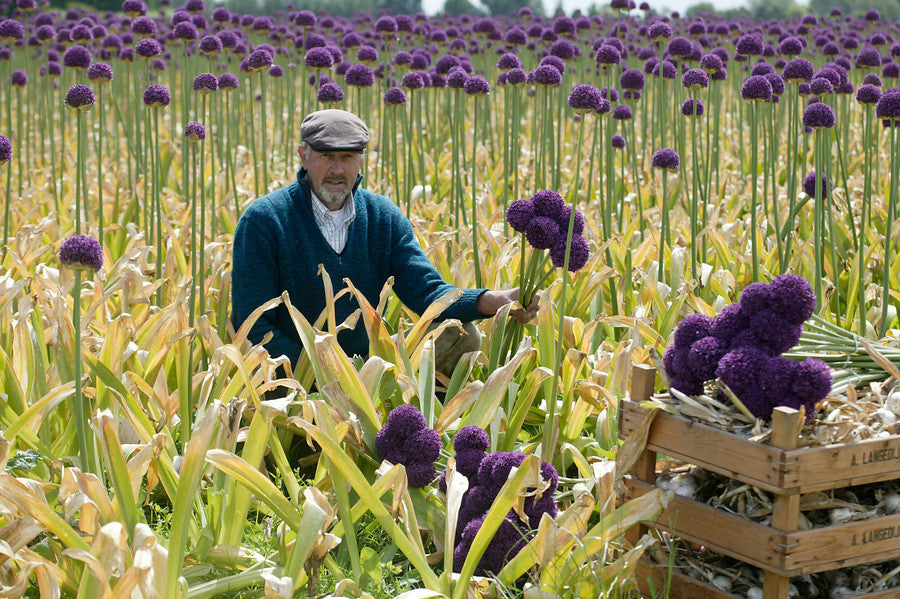
When the flowers are finished, remove the heads and leave the stems to die back naturally (which will help to feed the bulb). In late summer, remove all dead foliage and flower stems.
Alliums in containers
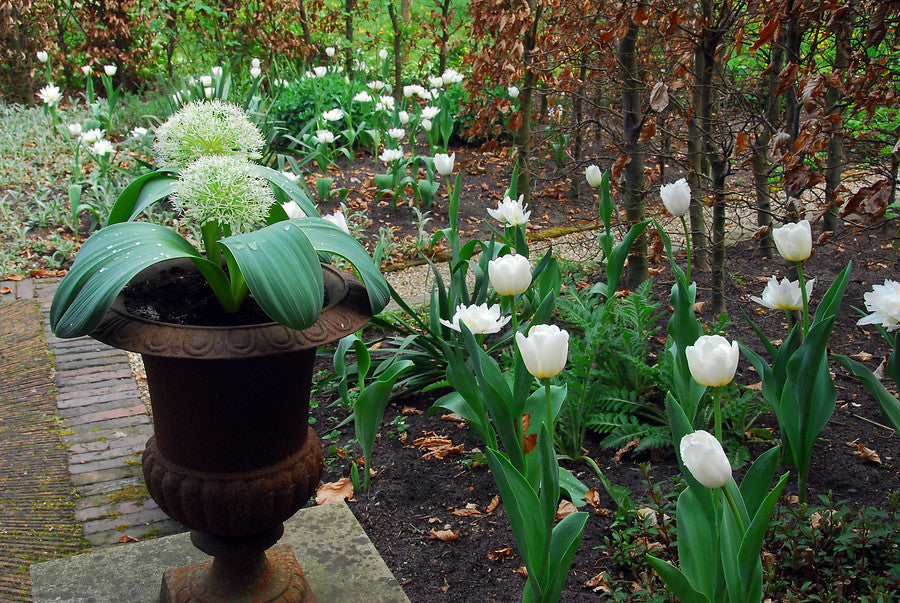
Many alliums can be grown in containers, although it is probably best to avoid really tall varieties. As long as the pot is deep enough to accommodate the bulb, they will be quite happy. The ideal compost is one of equal parts John Innes No 3, multipurpose compost and grit. Bulbs are best re-potted into fresh compost each autumn, and if the leaves are allowed to die down naturally, they won’t require extra feeding.
Getting the best look with alliums
For a bold, contemporary look, mix stronger colours. Mingle yellow tulips or doronicum daisies with alliums either side of a path using the acid-green lady’s mantle (Alchemilla mollis) or euphorbia as a leafy filler. Alternatively, replicate one of the most iconic allium scenes ever, from plantswoman Rosemary Verey’s famous tunnel at Barnsley House in Gloucestershire, where alliums reach up to arches festooned with yellow laburnum.

One of the simplest of schemes is to grow alliums with plants that have silver or blue-grey foliage, such as Sedum ‘Autumn Joy’ or Artemisia ‘Powis Castle’, both of which look great setting off the bright allium globe flowers.
White alliums, such as A. multibulbosum ‘Nigrum’, look wonderful with silver, too, and add structure to serene white or green planting schemes.
One of my favourite combinations was the lovely Mount Everest, which looks best with a dark backdrop to set it off (mine was a deep green thuja hedge).

Allium sphaerocephalon looks like a little maroon and green egg, and flowers quite late, in August. I’ve squeezed some in between low-growing, late-flowering Michaelmas daisies and Stipa tenuissima grass. The daisies were a useful prop for the 70cm allium stems, while the grass brought out the wispy mauve tinge of the allium flowers.
Low-growing varieties look good on a rock garden, too.
Alliums indoors

Not many people realise that alliums can be enjoyed just as much indoors. As a cut flower, add a drop of bleach to the water to minimise the oniony smell, or change the water regularly. They should look good for up to 14 days, without the need to rearrange them.Alliums make good dried flowers, too, lasting for ages indoors. I know someone who kept her perky alliums in a hallway vase – for three years!
Allium varieties
There are several dozen varieties available commercially, all with slightly different colouring to the flowers. Farmer Gracy has selected 11 of the very best:
-
Allium atropurpureum ↑
Carrying its red-purple and blue-purple to deep pink flowers, this Eastern European species really appreciates a spot in full sun. Plant in clusters. It also combines well with roses. To 85cm tall.
Allium multibulbosum ‘Nigrum’ – beautiful semi-rounded heads of whitish flowers, each bloom of which is accentuated by a green centre. To 38cm tall. Available in Farmer Gracy’s Abbey Road Collection.
-
Allium Gladiator ↑
Each giant flower head is 20cm or more in diameter, and contains countless miniature florets, each a rich pink- or rose-purple. Look closely at the flowerheads, for the more you look, the more you see! This is one of the tallest varieties available. To 140cm tall – and more.
-
Allium Mount Everest ↑
This exquisite species reaches a metre or so in height, and is topped by balls of 50 or more white, pointy flowers. They last for months. Use it at the back of flower borders to create a striking backdrop for other plants. To 95cm tall.
■ The above two alliums are available in Farmer Gracy’s Perfect Partners Collection. The rich purple and white flowers will really light up a corner of the garden.
-
Allium Ambassador ↑
An elegant giant, its tiny star flowers make up the flower head, in a vivid purple. It flowers for five weeks in early summer, and keeps its attractive seed heads into late summer. To 140cm tall.
-
Allium Purple Sensation ↑
One of the best. At the end of the flower stalk, 100 or more lavender stars shoot out, making a breathtaking sight. Plant several bulbs close together and see why this is one of the best plants to have in your garden. To 75cm tall.
-
Allium sphaerocephalon ↑
The flower head packs in countless flowers that turn from green through to red- or rose-purple
■ The above three alliums, along with Allium atropurpureum, are available in Farmer Gracy’s Purple Rain™ Collection. It’s a regal array of varieties representing all the best purple alliums, and is an excellent choice for anyone who just can’t make up their minds which of the purple alliums they want!
-
Allium Forelock ↑
This variety has only been available for a few years. Look closely at the flowers and you can almost see masses of tiny, full-cheeked faces dotted with silvery beards and topped with spiky, red and white hair. To 60cm tall.
-
Allium Green Drops ↑
New for 2017, this variety will make you look twice! The blooms feature mini-florets, shooting out from the main flower head. It is a new and rare variety, so if you just have to have real collectors' items, don’t delay in placing your order. To 70cm tall.
-
Allium nevskianum ↑
Wide flower heads of dark pink, deep red or purple, grow close to the ground, set between two broad leaves. To 15cm tall.
-
Allium Silver Spring ↑
Highly fragrant, this allium is a gem. Its clear white to blush pink flowers have six petals, and deep purple centres that glow like jewels. To 70cm tall.
■ The above four varieties are available in Farmer Gracy’s Allium Elite™ Collection. Planted together, they allow collectors to get four of the most distinctive and unusual varieties together. Even experienced plant people will have to look twice when they see these unusual and curious beauties.
I hope I have whetted your appetite when it comes to beautiful ornamental onions. Grow a few of these amazing Allium bulbs, and I guarantee people will think you’ve hired a professional garden designer!
The answer to the Allium Conundrum: 3) Tulip. Botanically speaking, alliums are members of the plant sub-family Allioideae, which is in the family Amaryllidaceae – which includes African lily (agapanthus), as well as daffodils, crocuses and many other bulb plants, including amaryllis. Tulips, however, are in a completely different plant family – Liliaceae – which contains lilies, fritillaries and the dog’s tooth violet (erythronium).
 |
Graham Clarke |







































































































































































































































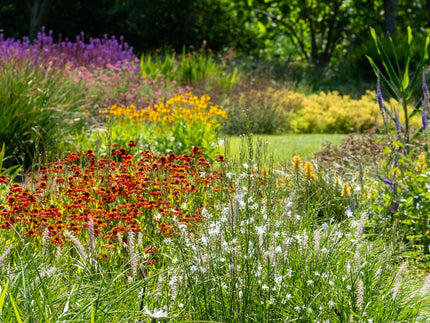
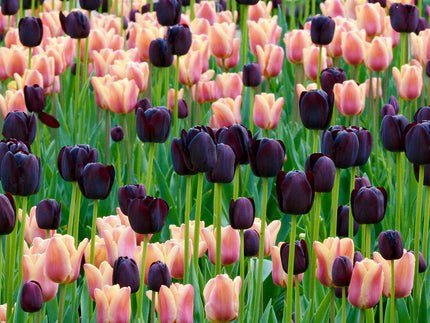
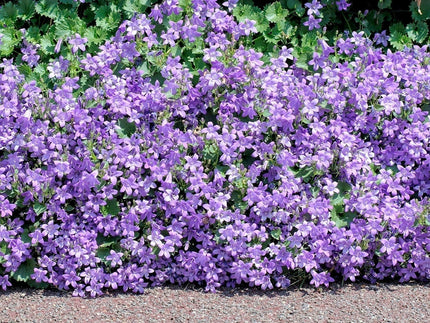
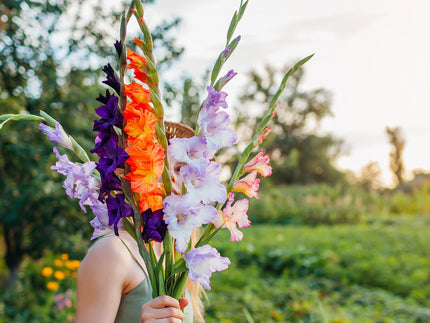
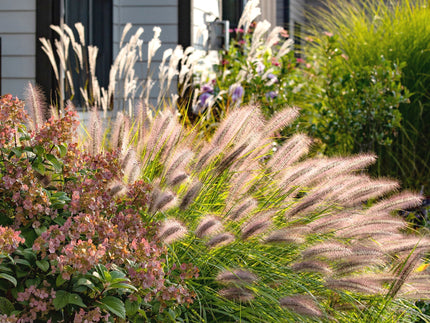
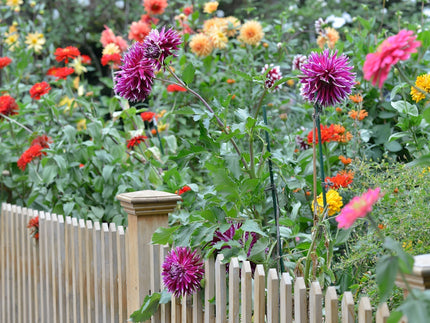
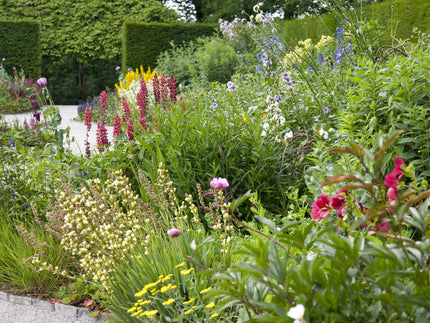
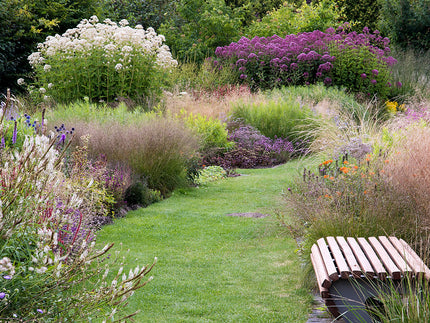
9 comments
My alliums also had white blobs. Take a look at this link. Sometimes they produce bulbs on the head.
https://forum.gardenersworld.com/discussion/3555/allium-growths
My purple aliums have white “egg like” blobs in the center, i’ve searched the internet to see if I can find anything, but nothing … please can you help???
One of my allium is growing two heads such that the first head has reached almost full growth and the second head is entangled in the first head. Should I separate the heads, is this normal with some allium. Thank you in advance
Hi could you please tell me how i should store my pot grown allium after flowing?
I have allium Christophii purple sensation and siculum bulgaricum.
Your colleen
I was given cut Alliums by a friend . Can you grow them from seeds off them?